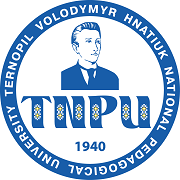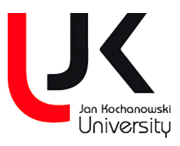HUMOROUS FEATURES OF GERMAN APHORISMS
DOI:
https://doi.org/10.32782/2307-1222.2025-59-11Keywords:
German aphorism, humor, comic effect, content plan, expression planAbstract
The article is devoted to the study of the peculiarities of German aphorisms and the identification of humorous features in their content and forms of expression. The structural and semantic elements of German aphorisms, which are characterized by brevity and accuracy of content, are analyzed. Aphorisms are considered to be short texts. The humorous effect of aphorisms is manifested in the feeling of unjustified expectations and is actualized by the manifestation of the emotional, cognitive, mental and physical state of the communicator. The creator of aphorisms is a person in his interaction with the world around him in politics, religion, art and many other areas. German aphorisms reflect life’s wisdom through the concepts of good and evil, practical and theoretical, etc. The manifestation of humour in German aphorisms comes to life through the incongruous expression of wisdom, which is typical for the linguistic and cultural peculiarities of the German space. The functional features of aphorisms are reproduced through absurd formulations of thoughts or judgments in communication. The humorous effect is an expression of a kind of feedback between the realities of life of that period, which is recorded in the paradigm Aphorismen durch Aphorismen. German aphorisms are constructed in the present tense in the form of narrative, exclamatory and interrogative sentences. Its structure assumes the most important value orientations of the target language culture through lexical and stylistic design, compositional structure and identified authorship of representatives of German culture. The use of German aphorisms in communication reveals the essence of the national German worldview, emphasizes its originality and paradoxicality. German aphorisms are markers of the laughter culture of the German-speaking linguistic and cultural space.
References
Folgmann S. Die heilende Kraft des Lachens. 2023. URL: https://www.humortraining-ammersee.de/tag/lachen/.
Freud S. Jokes and Their Relation to the Unconscious. Hrsg. James Strachey. Norton, 1960. 258 p.
Kirvalidze N. The Author’s Modality and Stratificational Structure of a Literary Text in Modern English. IBSU International Refereed Multidisciplinary Scientific Journal, 2006. Vol. 1. P. 138–143.
Lyons J. Semantics. Cambridge : Cambridge University Press, 1977. 897 p.
Janich N. Kurze Texte und Kurztexte – transtextuell vernetzt? In: Reuter, E., Rink, Ch. (Hrsg.): Kurze Texte und Intertextualität. Ausgewählte Beiträge der GeFoText- Konferenz vom 26.9. bis 27. 9. 2013 in Vaasa. Finnische Beiträge zur Germanistik, 32. Frankfurt am Main : Peter Lang, 2015. S. 27–48.
Derrida J. Limited Inc. Northwestern University Press, 1988. 160 p.
Nakassis C.V. Citation and citationality. Signs and Society, 2013. Vol. 1(1). P. 51–77.
Silverstein M. Axes of evals. Token versus type interdiscursivity. Journal of Linguistic Anthropology, 2005. Vol. 15(1). P. 6–22.
Luger K., Rehnger R. Die multukulturelle Gesellschaft und die Medien. In: Dialog der Kulturen. Wien : Österreichischer Kunst- und Kulturverlag, 1994. 360 p.
Fricke H. Aphorismus. In: Historisches Wörterbuch der Rhetorik. Hg. v. Gert Ueding. Max Niemeyer Verlag Tübingen, 1992. Bd. 1. 1332 S.
Koestler A. Der göttliche Funke. Der schöpferische Akt in Kunst und Wissenschaft. Bern. München. Wien: Scherz, 1966. 532 S.










